Text
Understanding Different Types of Water Pumps: Which One is Right for You?
Water pumps play a vital role in various applications, from residential water supply to agricultural irrigation and industrial processes. With a variety of pump types available on the market, choosing the right one for your specific needs can be challenging. In this guide, we'll explore the characteristics, advantages, and applications of different types of water pumps to help you make an informed decision.

Centrifugal Pumps:
Characteristics: Centrifugal pumps use centrifugal force to move water through a rotating impeller. They are versatile and widely used in residential, commercial, and industrial applications.
Advantages: Centrifugal pumps are efficient, easy to install, and suitable for pumping clean or slightly contaminated liquids. They offer a wide range of flow rates and can handle high capacities.
Applications: Common applications include water supply and distribution, irrigation, HVAC systems, and wastewater management.
Submersible Pumps:
Characteristics: Submersible pumps are submerged in water and designed to be installed inside a well, tank, or sump. They operate quietly and are suitable for deep well pumping or applications where the pump needs to be submerged.
Advantages: Submersible pumps are highly efficient, provide consistent water pressure, and are resistant to cavitation. They are ideal for residential water supply, irrigation, groundwater management, and dewatering.
Applications: Well water pumping, groundwater extraction, sewage and wastewater treatment, fountain and waterfall installations.
Jet Pumps:
Characteristics: Jet pumps use suction and pressure to draw water from a well or reservoir. They come in two main configurations: shallow well jet pumps and deep well jet pumps.
Advantages: Jet pumps are cost-effective, easy to install, and suitable for shallow or moderately deep wells. They can be used in areas where the water table fluctuates.
Applications: Residential water supply, irrigation, livestock watering, pond and pool maintenance.
Booster Pumps:
Characteristics: Booster pumps are used to increase water pressure in residential or commercial water distribution systems. They are typically installed inline with existing piping and can be controlled manually or automatically.
Advantages: Booster pumps improve water pressure and flow rates, ensuring consistent performance in multi-story buildings or areas with low water pressure.
Applications: Increasing water pressure in homes, apartments, hotels, commercial buildings, and irrigation systems.
Well Pumps:
Characteristics: Well pumps are specifically designed for extracting water from underground wells or boreholes. They can be submersible or surface-mounted, depending on the well depth and configuration.
Advantages: Well pumps provide reliable water supply from deep or shallow wells, ensuring access to groundwater for residential, agricultural, and industrial use.
Applications: Residential well water systems, agricultural irrigation, livestock watering, groundwater monitoring and remediation.
Choosing the right water pump depends on factors such as water source, depth, flow rate requirements, and intended applications. By understanding the characteristics and advantages of different pump types, you can select the most suitable option for your specific needs, whether it's supplying water to your home, irrigating crops, or managing industrial processes. If you're unsure about the best pump for your situation, consult with a knowledgeable pump supplier or professional plumber for guidance. For more info contact Water Pump Suppliers in UAE or call us at +971 4 2522966.
0 notes
Text
Green Solutions: Installing Energy-Efficient Water Pumps
In an era where environmental sustainability is a growing concern, homeowners are increasingly seeking energy-efficient solutions to reduce their carbon footprint and lower utility bills. Installing energy-efficient water pumps is one such green solution that offers both environmental and economic benefits. In this guide, we'll explore the importance of energy efficiency in water pumps and provide tips for selecting and installing eco-friendly options.

Importance of Energy Efficiency in Water Pumps:
Energy consumption: Traditional water pumps can be significant consumers of electricity, especially if they run continuously or operate at high power levels.
Environmental impact: High energy consumption contributes to greenhouse gas emissions and exacerbates climate change, impacting ecosystems and human health.
Cost savings: Energy-efficient water pumps consume less electricity, resulting in lower utility bills and long-term savings for homeowners.
Features of Energy-Efficient Water Pumps:
Variable speed control: Pumps with variable frequency drives (VFDs) or adjustable speed settings can adapt their performance to match demand, reducing energy consumption during periods of low usage.
High-efficiency motors: Motors with high efficiency ratings (such as IE3 or NEMA Premium) convert more electrical input into mechanical output, minimizing wasted energy as heat.
Optimized design: Modern pump designs incorporate hydraulic efficiencies and optimized components to maximize performance while minimizing energy losses.
Smart technology: Some water pumps are equipped with smart controls and monitoring systems that optimize operation based on real-time conditions, further improving energy efficiency.
Selecting Energy-Efficient Water Pumps:
Consider pump efficiency: Look for pumps with high efficiency ratings, such as those certified by programs like ENERGY STAR or meeting international standards like ISO 9906.
Evaluate lifecycle costs: Factor in not just the upfront cost of the pump but also its long-term operating costs, including energy consumption and maintenance requirements.
Assess system requirements: Choose a pump size and capacity that match your water demand, avoiding oversized pumps that consume excess energy.
Research manufacturer credentials: Select pumps from reputable manufacturers with a track record of producing energy-efficient and reliable products.
Installation and Maintenance Tips:
Ensure proper sizing and installation: Follow manufacturer guidelines and consult with a professional plumber to ensure the pump is correctly sized and installed for optimal performance.
Regular maintenance: Implement a preventive maintenance schedule to keep the pump and associated components clean, lubricated, and in good working condition.
Monitor performance: Use smart controls or monitoring systems to track energy usage and pump performance, identifying opportunities for further optimization.
Installing energy-efficient water pumps is a proactive step towards reducing energy consumption, lowering carbon emissions, and saving money on utility bills. By selecting pumps with advanced features, such as variable speed control and high-efficiency motors, homeowners can enjoy reliable water supply while minimizing environmental impact. Investing in green solutions not only benefits the planet but also contributes to a more sustainable and cost-effective home infrastructure in the long run. For more info contact Water Pump Suppliers in UAE or call us at +971 4 2522966.
0 notes
Text
Troubleshooting Common Water Pump Installation Issues
Installing a water pump is essential for maintaining a reliable water supply in your home. However, like any mechanical system, water pumps can encounter issues during installation or operation. Knowing how to troubleshoot common problems can help you identify and resolve issues quickly, ensuring your water pump functions efficiently. In this guide, we'll explore some of the most common water pump installation issues and provide troubleshooting tips to address them.
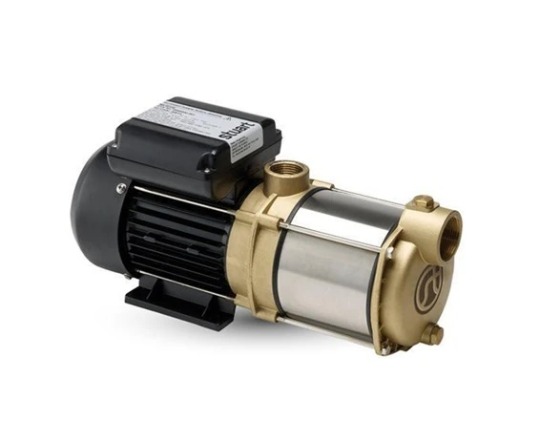
Low Water Pressure:
Check for clogged filters or screens in the pump inlet or distribution pipes. Clean or replace them as necessary.
Inspect for leaks in the suction line or pump fittings. Tighten connections or replace damaged components.
Verify that the pump is sized correctly for the water demand and system requirements. An undersized pump may result in low water pressure.
Adjust the pressure switch settings if applicable to increase the cut-in and cut-out pressure levels.
Noisy Operation:
Inspect the pump and motor for loose or damaged components, such as impellers, bearings, or seals. Tighten or replace them as needed.
Check for air leaks in the suction line or fittings. Use pipe sealant or Teflon tape to seal any leaks.
Ensure the pump is properly aligned and securely mounted to the base or foundation. Misalignment can cause vibration and noise.
Lubricate moving parts according to the manufacturer's recommendations to reduce friction and noise.
Pump Cycling On and Off Frequently:
Adjust the pressure switch settings to optimize the cut-in and cut-out pressure levels. A narrow pressure band may cause the pump to cycle excessively.
Inspect for leaks in the system, including fittings, valves, and pressure tanks. Repair or replace any leaking components to maintain system pressure.
Check for waterlogged pressure tanks, which can interfere with the pump's operation. Drain the tank or replace it if necessary.
Verify that the pump size and capacity are appropriate for the water demand. An oversized pump may cycle on and off more frequently.
Pump Not Priming or Drawing Water:
Ensure the suction line is properly primed and free from air pockets. Use a priming device or manual priming method to remove air from the system.
Check for obstructions or blockages in the suction line or inlet screen. Clear any debris that may be hindering water flow.
Verify that the pump is submerged or positioned correctly in the water source. Submersible pumps must be fully submerged to operate effectively.
Inspect the foot valve or check valve for damage or debris buildup. Clean or replace the valve if necessary to maintain proper suction.
Troubleshooting common water pump installation issues requires a systematic approach to identify and address underlying problems effectively. By following these troubleshooting tips and consulting the pump manufacturer's guidelines, you can resolve issues such as low water pressure, noisy operation, frequent cycling, and priming difficulties. If you encounter complex or persistent issues, don't hesitate to seek assistance from a professional plumber or pump technician to ensure your water pump functions reliably. Regular maintenance and periodic inspections can also help prevent future problems and prolong the lifespan of your water pump system. For more info contact Water Pump Suppliers in UAE or call us at +971 4 2522966.
0 notes
Text
DIY vs. Professional Installation: Pros and Cons
When it comes to installing a water pump in your home, one of the first decisions you'll need to make is whether to tackle the project yourself or hire a professional. Both options have their advantages and drawbacks, and understanding them can help you make an informed decision. In this guide, we'll explore the pros and cons of DIY installation versus professional installation for water pumps.
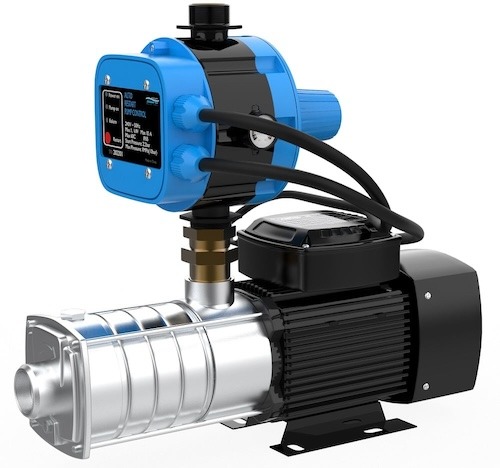
DIY Installation:
Pros:
Cost Savings: DIY installation can save you money on labor costs associated with hiring a professional plumber or technician.
Flexibility: You have the flexibility to work on the installation at your own pace and schedule, without relying on external contractors.
Learning Experience: DIY installation provides an opportunity to learn about your home's plumbing system and gain valuable skills for future projects.
Personal Satisfaction: Successfully completing a DIY project can be personally rewarding and give you a sense of accomplishment.
Cons:
Lack of Expertise: DIY installation requires a certain level of plumbing knowledge and skills. Without proper experience, you may encounter challenges or make mistakes that could lead to costly repairs.
Time and Effort: Installing a water pump can be time-consuming and physically demanding, especially if you're not familiar with the process. You may need to invest significant time and effort into research, preparation, and execution.
Safety Risks: Working with plumbing systems and electrical components can pose safety hazards, such as electrical shock or water damage. Without proper safety precautions, DIY installation may increase the risk of accidents or injuries.
Limited Warranty Coverage: Some manufacturers may void warranties if the pump is not installed by a certified professional. DIY installation could potentially void warranty coverage and leave you responsible for repair or replacement costs.
Professional Installation:
Pros:
Expertise and Experience: Professional plumbers and technicians have the knowledge, skills, and experience to install water pumps correctly and efficiently. They can identify potential issues and ensure proper installation according to industry standards.
Time Savings: Hiring a professional saves you time and effort by delegating the installation process to trained professionals who can complete the job quickly and effectively.
Warranty Protection: Professional installation typically comes with warranty coverage and guarantees from both the installer and the manufacturer, providing added peace of mind.
Safety Assurance: Professionals adhere to safety protocols and regulations to minimize risks during installation, reducing the likelihood of accidents or damage.
Cons:
Higher Cost: Professional installation incurs labor costs, which can be higher than the expenses associated with DIY installation.
Scheduling Constraints: You may need to coordinate with the availability of professional plumbers or technicians, which could result in scheduling conflicts or delays.
Limited Control: Hiring a professional means relinquishing some control over the installation process, as you rely on their expertise and decisions.
Conclusion: Whether to opt for DIY installation or hire a professional for your water pump installation depends on various factors, including your level of expertise, available time, budget, and preference for risk management. While DIY installation offers cost savings and personal satisfaction, it requires careful consideration of safety risks and potential challenges. On the other hand, professional installation provides expertise, efficiency, and warranty protection, albeit at a higher cost. Ultimately, weigh the pros and cons carefully and choose the option that best aligns with your priorities and circumstances. If you're unsure about your abilities or the complexity of the installation, consulting with a professional plumber can provide valuable guidance and ensure a successful outcome. For more info contact Water Pump Suppliers in UAE or call us at +971 4 2522966.
0 notes
Text
Choosing the Right Water Pump for Your Home: Factors to Consider
Selecting the appropriate water pump for your home is essential to ensure a reliable water supply and efficient operation. With various types and models available on the market, it's crucial to consider several factors before making a decision. This guide will outline key considerations to help you choose the right water pump for your specific needs.

Water Source and Purpose:
Determine the source of water (well, surface water, municipal supply) and its depth or distance from the pump location.
Identify the purpose of the pump: drinking water, irrigation, household use, drainage, etc.
Pump Type:
Centrifugal Pumps: Suitable for most residential applications, including boosting water pressure, irrigation, and general water transfer.
Submersible Pumps: Ideal for deep wells or situations where the pump needs to be submerged in water. They are quieter and more efficient but may require professional installation.
Jet Pumps: Commonly used in shallow wells or where suction lift is necessary. They come in shallow well and deep well configurations.
Booster Pumps: Designed to increase water pressure in residential systems. Useful for homes with low water pressure.
Flow Rate and Pressure Requirements:
Determine the required flow rate (gallons per minute, liters per hour) and pressure (psi, bar) based on your household's water demand and specific applications.
Consider peak usage times and any additional water needs, such as irrigation or filling a swimming pool.
Pump Size and Horsepower:
Choose a pump size and horsepower that matches your water demand and system requirements.
Avoid oversized pumps, as they may lead to excessive energy consumption and inefficiency.
Electrical Requirements:
Ensure the pump's electrical requirements (voltage, phase, ampacity) match your home's electrical system.
Consider energy-efficient options or pumps with variable speed controls to optimize energy consumption.
Durability and Reliability:
Select a pump from a reputable manufacturer known for producing quality and durable products.
Check for warranties and customer reviews to gauge reliability and performance.
Installation and Maintenance:
Consider the ease of installation and maintenance requirements associated with the pump.
Determine if professional installation is necessary, especially for submersible pumps or complex systems.
Budget:
Establish a budget for the pump purchase, installation, and any additional components or accessories.
Compare prices from different manufacturers and suppliers to find the best value for your investment.
Choosing the right water pump for your home involves careful consideration of various factors, including water source, pump type, flow rate, pressure requirements, durability, and budget. By assessing your specific needs and understanding the available options, you can make an informed decision that ensures a reliable and efficient water supply for your household. If you're unsure about the best pump for your situation, consult with a knowledgeable pump supplier or professional plumber for guidance. For more info contact Water Pump Suppliers in UAE or call us at +971 4 2522966.
0 notes
Text
The Complete Guide to Installing a Residential Water Pump: Step-by-Step Instructions
Installing a residential water pump can be a rewarding DIY project that ensures your home has a reliable water supply. Whether you're replacing an old pump or installing one for the first time, this comprehensive guide will walk you through the process step-by-step. By following these instructions carefully, you can successfully install a water pump and enjoy consistent water pressure in your home.
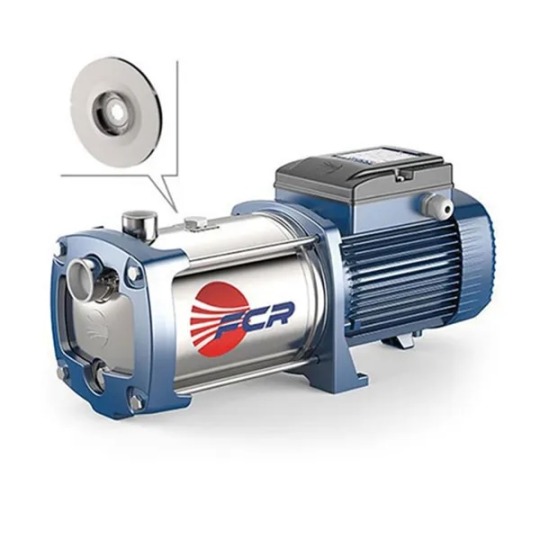
Step 1: Gather Your Tools and Materials Before you begin, make sure you have all the necessary tools and materials on hand. This typically includes:
Water pump
Pipe wrench
Teflon tape
PVC pipes and fittings
Pressure tank (if required)
Pressure switch (if not already built into the pump)
Electrical wiring and connectors
Screwdrivers
Adjustable wrench
Pipe cutter or hacksaw
Thread sealant
Safety gloves and goggles
Step 2: Choose the Location Selecting the right location for your water pump is crucial for its efficiency and longevity. Look for a spot that is well-ventilated, easily accessible for maintenance, and close to the water source (such as a well or water tank). Ensure there is sufficient space for the pump and associated equipment.
Step 3: Prepare the Site Prepare the installation site by clearing away any debris or obstacles. If you're installing a pump in a well, ensure the well casing is in good condition and free from obstructions. Clean the area around the wellhead or water source to prevent contamination.
Step 4: Install the Pump Follow these steps to install the water pump:
Position the pump: Place the pump on a stable surface, ensuring it is level and securely anchored.
Connect the pipes: Use PVC pipes and fittings to connect the pump to the water source and distribution system. Apply Teflon tape or thread sealant to the pipe threads to prevent leaks.
Install the pressure tank: If your system requires a pressure tank, install it according to the manufacturer's instructions. Connect it to the pump and distribution pipes.
Wire the pump: If the pump requires electrical wiring, follow the wiring diagram provided by the manufacturer. Ensure all connections are secure and insulated to prevent electrical hazards.
Step 5: Test the System After installing the pump, test the system to ensure everything is functioning correctly. Turn on the power to the pump and check for any leaks or unusual noises. Monitor the water pressure and flow rate to confirm that they meet your expectations.
Step 6: Final Checks and Adjustments Once the system is operational, perform a final inspection to verify that all connections are tight and secure. Adjust the pressure switch settings if necessary to achieve the desired water pressure. Take note of any maintenance requirements and keep a record of the installation for future reference.
Congratulations! You have successfully installed a residential water pump. By following these step-by-step instructions and taking proper precautions, you can enjoy reliable water supply in your home for years to come. If you encounter any difficulties during the installation process, don't hesitate to consult a professional plumber or pump technician for assistance. For more info contact Water Pump Suppliers in UAE or call us at +971 4 2522966.
0 notes
Text
The Environmental Impact of Lowara Pumps
In an era where environmental responsibility is paramount, the choices we make in industrial and commercial applications resonate beyond efficiency—they impact the planet. Lowara, a leader in precision pumping solutions, stands as a beacon of environmental stewardship. In this exploration, we delve into the ways in which Lowara pumps contribute to sustainability and minimize their environmental footprint.

1. Energy Efficiency for Reduced Carbon Footprint: Efficient Design: Lowara pumps are meticulously engineered for maximum energy transfer, resulting in reduced energy consumption. This not only translates to operational cost savings but also contributes to a lower carbon footprint, aligning with global efforts to mitigate climate change.
2. Variable Speed Drives: Precision Energy Optimization: Adaptive Technology: The incorporation of Variable Speed Drives (VSD) in Lowara pumps is a testament to adaptive technology. By adjusting pump speed based on real-time demand, VSD technology optimizes energy consumption. This innovation not only enhances efficiency but also plays a significant role in reducing overall energy usage and environmental impact.
3. Eco-Friendly Material Choices: Responsible Manufacturing: Lowara is committed to the use of eco-friendly materials in pump construction. From stainless steel to other sustainable alloys, the choice of materials reflects a dedication to responsible manufacturing practices that minimize the environmental impact of the production process.
4. Compliance with Environmental Standards: Regulatory Adherence: Lowara pumps adhere to stringent environmental standards and certifications. This commitment ensures that the manufacturing and operation of Lowara pumps align with recognized industry norms, promoting environmental sustainability and responsible business practices.
5. Extended Lifecycle and Reliability: Reduced Waste: The robust construction and precision engineering of Lowara pumps contribute to extended lifecycles and increased reliability. Prolonged product life means fewer replacements and, consequently, reduced waste. This emphasis on durability supports the circular economy model and minimizes the environmental impact associated with product disposal.
6. Innovations in Fluid Dynamics: Optimized Performance: The continuous pursuit of innovations in fluid dynamics by Lowara leads to pumps that operate with maximum efficiency. By optimizing performance, these pumps contribute to resource conservation and reduced energy usage, fostering a more sustainable approach to fluid management.
7. Waste Reduction in Production: Lean Manufacturing: Lowara employs lean manufacturing principles to minimize waste in the production process. By optimizing material usage and reducing inefficiencies, the brand actively works toward a more sustainable and environmentally friendly manufacturing approach.
8. Contribution to Water Conservation: Efficient Water Transfer: In applications where Lowara pumps are deployed for water supply, irrigation, or industrial processes, the efficiency of fluid transfer contributes to water conservation. By ensuring that each drop is used effectively, Lowara pumps support responsible water management practices.
Lowara's commitment to environmental sustainability goes beyond the pump's operational efficiency. From responsible material choices to adherence to regulatory standards, each aspect of the brand's approach is a step toward nurturing the environment. By choosing Lowara pumps, users not only gain precision pumping solutions but also become stewards of a greener and more sustainable future. Stay tuned for more insights into the intersection of technology, efficiency, and environmental responsibility in pumping solutions. For more info contact Lowara Pump Supplier in UAE or call us at +971 4 2522966.
0 notes
Text
Introduction to Flow Rate and Head: The Cornerstones of Pump Selection:
Flow rate and head are fundamental parameters in the world of centrifugal pump selection. These two factors serve as the building blocks upon which the performance and suitability of a pump for a specific application are determined. In this blog post, we'll begin our exploration of flow rate and head by laying a strong foundation of understanding, highlighting their significance, and setting the stage for informed pump selection.
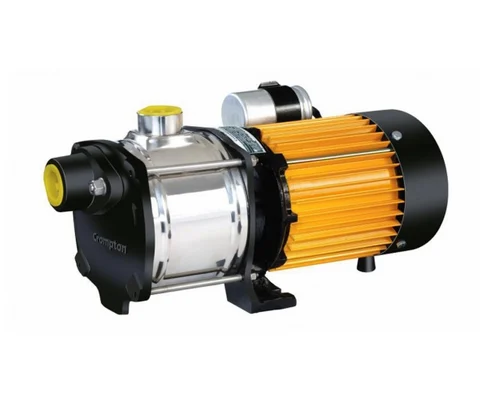
Understanding the Basics: What is Flow Rate?
A clear definition of flow rate and its importance in fluid dynamics.
Head: The Driving Force in Pumping
An introduction to head as the energy required to move fluid through a system.
Why Flow Rate and Head Matter: The Central Role in Pump Selection
Why flow rate and head are considered the cornerstones of pump selection and system design.
Flow Rate Measurement Units: Cubic Feet per Second to Gallons per Minute
A look at common units used to express flow rate and their conversions.
Head Measurement Units: Feet to Meters
Understanding head measurement units and how they relate to different pump systems.
The Pump Performance Curve: How Flow Rate and Head Interact
An introduction to the pump performance curve and how it represents a pump's capabilities.
System Curve: Mapping Your Application's Requirements
How to create a system curve that reflects your application's specific flow rate and head requirements.
NPSH: The Role of Net Positive Suction Head in Flow Rate
Explaining how Net Positive Suction Head (NPSH) affects flow rate and pump performance.
Efficiency: Balancing Flow Rate and Head for Optimal Operation
How flow rate and head influence the efficiency of centrifugal pumps.
Specific Speed: Categorizing Pumps Based on Flow Rate and Head
Introduction to specific speed (Ns) as a tool for classifying pumps for various applications.
Variable Speed Control: Adapting Flow Rate and Head to Changing Needs
How variable speed control can optimize pump performance in response to varying demands.
Case Studies: Real-World Examples of Flow Rate and Head in Pump Selection
Showcase real-life instances where understanding flow rate and head was critical for pump success.
Future Trends: Innovations in Flow Rate and Head Measurement and Control
A glimpse into emerging technologies that enhance the precision and control of these parameters.
Flow rate and head are the foundational principles upon which pump selection and system design are built. A comprehensive understanding of these parameters is essential for industries seeking to optimize pump performance, ensure efficiency, and meet the specific demands of their applications. This blog post serves as the starting point for delving deeper into the intricacies of flow rate and head in centrifugal pump applications. For more info contact water pump suppliers in uae or call us at +971 4 2522966.
0 notes
Text
Understanding Your Application's Requirements: Flow Rate and Head:
When selecting a centrifugal pump for your specific application, understanding the requirements of flow rate and head is essential. In this blog post, we'll delve into the significance of flow rate and head in pump selection, how to calculate these parameters, and why they are crucial for achieving optimal pump performance.

Introduction to Flow Rate and Head: The Cornerstones of Pump Selection:
An overview of the fundamental concepts of flow rate and head in pump applications.
Flow Rate: The Volume of Fluid Delivery:
Explaining what flow rate is and why it's a critical parameter in pump selection.
Head: The Energy Needed to Move Fluid:
Understanding head as the energy required to overcome resistance and lift fluid.
Calculating Flow Rate and Head: The Basics of Pump Sizing:
Step-by-step guidance on how to calculate flow rate and head for your application.
System Curve and Pump Curve: Matching Pump Performance to System Demands:
How to create and analyze system and pump curves to find the right match.
NPSH (Net Positive Suction Head): Avoiding Cavitation:
The significance of NPSH in preventing cavitation and maintaining pump efficiency.
Efficiency Considerations: Balancing Flow Rate and Head for Optimal Efficiency:
How to find the sweet spot where pump efficiency is maximized.
Specific Speed (Ns): Classifying Pumps for Various Applications:
Understanding specific speed as a tool for categorizing pumps based on their performance.
Pump Selection Criteria: Matching Pump Characteristics to Application Needs:
Factors to consider when choosing the right pump based on flow rate and head requirements.
Variable Speed Control: Adapting Pump Performance to Changing Demands:
The benefits of variable speed drives in maintaining optimal flow rate and head.
Case Studies: Real-World Examples of Flow Rate and Head in Pump Selection:
Showcasing instances where understanding these parameters led to successful pump applications.
Future Trends: Innovations in Flow Rate and Head Measurement and Control:
A look at emerging technologies that enhance the accuracy and control of these parameters.
Understanding and accurately determining flow rate and head are fundamental to selecting the right centrifugal pump for your application. By mastering these concepts and their calculations, industries can ensure that their pumps operate efficiently and effectively, delivering the required fluid volume against the necessary resistance. For more info contact water pump suppliers in uae or call us at +971 4 2522966
0 notes
Text
Understanding Water Pump Distribution
Water pump distribution is a critical component of the supply chain that ensures water pumps produced by manufacturers reach the end-users efficiently and effectively. In this blog post, we'll delve into the fundamental concepts of water pump distribution, providing an overview of its essential functions and processes.
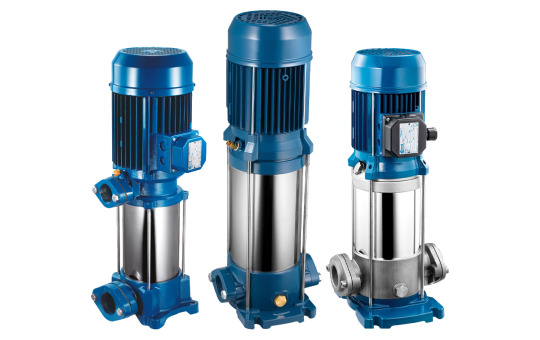
Introduction to Water Pump Distribution: The Supply Chain Connection:
An overview of the significance of water pump distribution in the broader supply chain.
The Role of Distributors: Linking Manufacturers and End-Users:
A detailed explanation of the pivotal role played by distributors in the distribution process.
Procurement from Manufacturers: The Starting Point:
How distributors source water pumps from manufacturers to populate their inventory.
Inventory Management: Balancing Supply and Demand:
The importance of efficient inventory management in ensuring an uninterrupted supply of water pumps.
Warehousing and Storage: Safekeeping of Pump Inventory:
An exploration of the warehousing and storage facilities used by distributors to house water pumps.
Logistics and Transportation: Getting Pumps to Customers:
The logistics and transportation strategies employed by distributors to deliver water pumps to customers.
Technical Support and Customer Assistance: A Key Service:
How distributors provide technical support and expertise to assist customers in selecting the right water pumps.
Quality Control: Ensuring Product Integrity:
The quality control measures implemented by distributors to maintain product standards.
Customer Relationship Management: Building Trust and Loyalty:
The importance of strong customer relationships in the water pump distribution business.
Market Insights and Tailored Solutions: Meeting Local Needs:
How distributors use their market insights to offer customized solutions that cater to regional requirements.
Sustainability Initiatives: Responsible Distribution Practices:
The role of distributors in promoting sustainability through eco-friendly distribution practices.
Challenges in Water Pump Distribution: Addressing Complexities:
An exploration of common challenges faced by water pump distributors and potential solutions.
Evolving Trends in Distribution: Technology and Automation:
An overview of emerging trends and technologies shaping the future of water pump distribution.
Collaboration with Manufacturers: A Symbiotic Relationship:
The collaborative partnerships between distributors and water pump manufacturers.
Regulatory Compliance: Adhering to Industry Standards:
The importance of distributors complying with industry regulations and safety standards.
Distribution Efficiency: Reducing Lead Times and Costs:
How distributors contribute to the efficiency of the supply chain by minimizing lead times and operational costs.
The Future of Water Pump Distribution: Looking Ahead:
A glimpse into the future of water pump distribution, including innovations and potential changes.
Conclusion: Water pump distribution is a complex yet crucial aspect of the supply chain that ensures the availability of water pumps to end-users across various industries. Understanding its basics is essential for manufacturers, distributors, and customers to appreciate the role it plays in providing efficient and reliable water pumping solutions. For more info contact water pump suppliers in uae or call us at +971 4 2522966.
0 notes
Text
The Role of Water Pump Distributors in the Supply Chain
Water pump distributors are a vital link in the supply chain that connects manufacturers and suppliers to end-users. In this blog post, we will delve into the essential role played by water pump distributors, exploring their functions, benefits, and their impact on the availability and efficiency of water pumps in various industries.

Understanding Water Pump Distribution: The Basics:
An introduction to the concept of water pump distribution and its role in the supply chain.
The Distributor's Role in the Supply Chain: A Multi-Faceted Approach:
A detailed examination of the various functions performed by water pump distributors, from procurement to delivery.
Streamlining Procurement: Sourcing Pumps from Manufacturers:
How distributors procure water pumps from manufacturers, ensuring a seamless flow of products into the distribution network.
Inventory Management: Balancing Supply and Demand:
The critical role of distributors in managing inventories to meet customer demand efficiently.
Logistics and Warehousing: Ensuring Timely Deliveries:
How distributors optimize logistics and warehousing to ensure on-time deliveries to customers.
Local Market Knowledge: Tailoring Solutions to Regional Needs:
The advantage of distributors having a deep understanding of local markets and being able to provide tailored solutions.
Technical Support and Expertise: Ensuring Customer Satisfaction:
How distributors offer technical support and expertise to assist customers in selecting the right water pumps and addressing any issues.
Customer Relationship Management: Building Trust and Loyalty:
The importance of maintaining strong relationships with customers through personalized service and support.
Supply Chain Efficiency: Reducing Lead Times and Costs:
How distributors contribute to supply chain efficiency by minimizing lead times and reducing operational costs.
Market Expansion and Reach: Extending Manufacturers' Reach:
The role of distributors in expanding the market reach of water pump manufacturers, enabling them to reach a broader customer base.
Quality Control and Assurance: Maintaining Product Standards:
How distributors ensure that water pumps meet quality standards through rigorous inspections and checks.
Inventory Financing: Reducing Manufacturer Risk:
Exploring how distributors often provide inventory financing, reducing financial risk for manufacturers.
E-commerce and Digital Transformation: Adapting to Changing Trends:
The role of technology and e-commerce in modernizing water pump distribution.
Sustainability Initiatives: Promoting Eco-Friendly Practices:
How distributors contribute to sustainability by supporting manufacturers with eco-friendly initiatives.
Challenges and Solutions: Navigating Distribution Complexities:
An examination of challenges faced by water pump distributors and strategies for overcoming them.
Collaboration Between Manufacturers, Distributors, and Customers: A Three-Way Partnership:
The importance of collaborative relationships between manufacturers, distributors, and end-users for successful water pump distribution.
Emerging Trends in Water Pump Distribution: The Future Landscape:
A glimpse into the future of water pump distribution, including emerging trends and technologies.
Water pump distributors are the unsung heroes in the supply chain, ensuring that the right pumps reach the right customers at the right time. Their multifaceted role is instrumental in the availability and efficiency of water pumps in various industries, ultimately contributing to customer satisfaction and business success. For more info contact water pump suppliers in uae or call us at +971 4 2522966.
0 notes
Text
Optimizing Solar Collectors for Low Light Conditions
Solar collectors are the heart of any solar water heating system, responsible for capturing sunlight and converting it into heat energy. While they perform admirably in direct sunlight, their efficiency in low light conditions is equally crucial. In this blog post, we delve into the design strategies that make solar collectors proficient at harnessing sunlight even when skies are overcast or during the winter months.

Table of Contents:
The Significance of Solar Collectors in Low Light Conditions
An introduction to the pivotal role of solar collectors in ensuring continuous energy capture, even in less-than-ideal lighting situations.
Selective Coatings: Maximizing Light Absorption
How selective coatings on collector surfaces enhance their ability to absorb sunlight efficiently, especially in low light conditions.
Glazing and Insulation: Minimizing Heat Loss
The importance of glazing and insulation in reducing heat loss from collectors, preserving captured energy during periods of reduced sunlight.
Vacuum Tube Collectors: Cold Weather Champions
A discussion of vacuum tube collectors and their effectiveness in cold climates, where low temperatures can accompany low light conditions.
Tracking Systems: Following the Sun
How tracking systems, such as single-axis and dual-axis trackers, optimize collector orientation to maximize sunlight exposure throughout the day.
Concentrated Solar Collectors: Amplifying Sunlight
An explanation of concentrated solar collectors, which focus sunlight onto a smaller area, increasing energy capture in low light conditions.
Advanced Materials: Efficiency Enhancements
How advanced materials, such as high-efficiency photovoltaic panels and nanomaterials, are incorporated into collector design to improve performance.
Diffuse Light Capture: Spreading the Net Wider
Techniques used in collectors to capture diffuse sunlight, which is prevalent in cloudy or overcast conditions.
Temperature Control: Preventing Overheating and Freezing
How temperature control mechanisms within collectors prevent overheating in direct sunlight and freezing during cold, low light periods.
Remote Monitoring: Real-Time Insights
The integration of remote monitoring systems that provide real-time data on collector performance, allowing adjustments in response to changing light conditions.
Energy Efficiency: Reducing Heat Loss and Waste
The impact of collector design on energy efficiency, including the reduction of heat loss and the prevention of energy waste in low light situations.
Maintenance and Cleaning: Clearing the Path to Efficiency
Tips for maintaining and cleaning collectors to ensure that dust, dirt, and snow do not hinder their performance in low light conditions.
Cold Weather Resilience: Thriving in Winter Light
Strategies employed in collector design to ensure efficiency and resilience during the winter months when low light conditions are common.
Cost Considerations: Balancing Efficiency and Affordability
A discussion of the cost-effectiveness of collector design strategies and how they can balance performance with affordability.
Emerging Technologies: Future-Ready Collector Designs
A glimpse into emerging collector technologies and innovations that promise even greater efficiency and adaptability in low light conditions.
Conclusion: Solar collectors are continuously evolving to maximize energy capture in all lighting conditions, including low light scenarios. By employing design strategies such as selective coatings, improved insulation, tracking systems, and advanced materials, these collectors ensure that solar water heating systems deliver consistent and efficient performance, regardless of the weather or time of year. For more info contact solar water heater supplier in uae or call us at +971 4 2522966.
0 notes
Text
Reliability in Any Weather for Solar Water Heaters
While solar water heaters are incredibly efficient, they may encounter limitations during adverse weather conditions or high-demand periods. Backup heating systems are the safety net that ensures a continuous supply of hot water, making solar water heaters a reliable choice for any weather or usage scenario. In this blog post, we explore the significance of backup heating systems and how they enhance the reliability of solar water heaters.
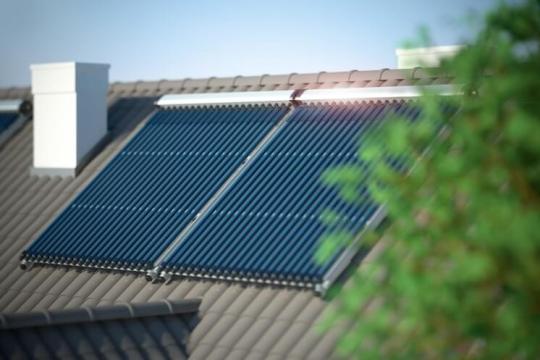
The Need for Backup Heating: Ensuring Hot Water Reliability
An introduction to the importance of backup heating systems in addressing limitations and ensuring consistent hot water availability.
Backup Heating Elements: Electric and Gas Options
An overview of the two primary types of backup heating elements—electric and gas—and their suitability for different situations.
Integration with Solar Water Heaters: A Coordinated Approach
How backup heating systems seamlessly integrate with solar water heaters to provide hot water when solar energy is insufficient.
Temperature Sensors and Controls: Coordinating Backup Activation
The role of temperature sensors and control systems in coordinating backup heating activation, ensuring efficient and timely use.
Operation Modes: Automatic and Manual Control
How backup heating systems offer both automatic and manual control modes, allowing users to tailor their hot water supply to their needs.
High-Demand Periods: Meeting Peak Usage
How backup heating systems come to the rescue during high-demand periods, such as multiple showers or heavy dishwasher use.
Cold Weather Resilience: Preventing Freeze Damage
The role of backup heating in preventing freeze damage during cold weather when solar energy may be insufficient.
Emergency Situations: Ensuring Hot Water Access
How backup heating elements ensure access to hot water in emergency situations, such as power outages or system malfunctions.
Efficiency and Cost Considerations: Balancing Energy Use
A discussion of the trade-offs between backup heating efficiency, energy costs, and environmental impact.
User-Friendly Controls: Adjusting Backup Heating
The development of user-friendly interfaces that allow homeowners to adjust backup heating settings for optimal control.
Maintenance and Safety: Ensuring Reliable Backup
Tips for maintaining backup heating elements and ensuring they operate safely and efficiently.
Energy Savings: Optimizing Backup Heating Usage
Strategies for optimizing backup heating usage to maximize energy savings and reduce operational costs.
Sustainability: Minimizing Environmental Impact
How backup heating systems contribute to the overall sustainability of solar water heaters by reducing reliance on fossil fuels.
Future Innovations: Advancing Backup Heating Technology
A glimpse into emerging backup heating technologies and innovations that promise greater efficiency and performance.
Conclusion: Backup heating systems are the backbone of reliability for solar water heaters. Their ability to seamlessly integrate with solar systems, coordinate with temperature sensors, and provide hot water during adverse conditions ensures that users have a consistent and dependable hot water supply. By offering versatility, control, and efficiency, backup heating systems make solar water heaters a resilient and trustworthy choice for any weather or usage scenario. For more info contact solar water heater suppliers in uae or call us at +971 4 2522966.
0 notes
Text
Preventing Overheating in Solar Water Heaters
Preventing overheating is crucial for the safe and efficient operation of solar water heaters. Temperature sensors and control systems are the guardians that ensure the solar collectors and heat transfer fluid do not reach excessively high temperatures. In this blog post, we explore the significance of temperature sensors and controls in solar water heaters and how they work to maintain system safety and efficiency.
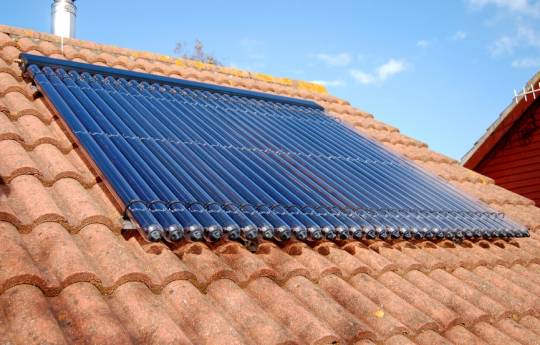
Table of Contents:
The Importance of Temperature Control in Solar Water Heaters
An introduction to the critical role temperature control plays in preventing overheating and ensuring safe operation.
Temperature Sensors: The Watchful Eyes of the System
An overview of temperature sensors, including thermistors and thermocouples, and their placement within the solar water heating system.
Collector Temperature Monitoring: Keeping Heat in Check
How temperature sensors continuously monitor the temperature of solar collectors, ensuring they don't exceed safe limits.
Heat Transfer Fluid Temperature Control: Regulating the Flow
The role of temperature sensors in maintaining the proper temperature of the heat transfer fluid, preventing overheating or freezing.
Emergency Shutdown Systems: Rapid Response to Overheating
How temperature control systems can trigger emergency shutdowns in cases of extreme overheating, safeguarding the system and users.
Temperature Differential Control: Balancing Heat Exchange
The use of temperature differential control to ensure that heat transfer between the collectors and storage tank remains efficient and safe.
Backup Heating Integration: Coordinated Temperature Control
How temperature controls integrate with backup heating elements to provide hot water while preventing overheating during low solar energy availability.
Data Monitoring and Feedback: Real-Time Insights
How temperature sensors provide real-time data, allowing users to monitor the system's performance and temperature conditions.
User-Friendly Interfaces: Temperature Display and Control
The development of user-friendly interfaces that display temperature data and allow users to adjust system settings for optimal control.
Alarm Systems and Alerts: Early Warning Signs
How temperature sensors trigger alarms and alerts in the event of temperature anomalies, providing early warning signs of potential issues.
Safety Compliance: Meeting Regulatory Standards
The role of temperature controls in ensuring that solar water heaters comply with safety and regulatory standards.
Energy Efficiency and Savings: Preventing Energy Waste
The direct link between temperature control, preventing overheating, and energy savings, reducing operational costs and environmental impact.
Maintenance and Troubleshooting: Ensuring Sensor Reliability
Tips for maintaining temperature sensors and controls, as well as troubleshooting common temperature-related issues for prolonged system reliability.
Future Innovations: Advancing Temperature Control
A look into emerging temperature control technologies and innovations that promise even greater efficiency and safety.
Temperature sensors and controls are the silent heroes that prevent overheating and ensure the safety and efficiency of solar water heaters. By continuously monitoring collector and fluid temperatures, coordinating with backup heating elements, and providing real-time data feedback, they play a pivotal role in making solar water heaters a reliable, eco-friendly, and cost-effective hot water solution. For more info contact solar water heater supplier in uae or call us at +971 4 2522966.
0 notes
Text
Circulation Control: Balancing Heat Transfer in Solar Water Heaters
Efficient circulation control is a key factor in optimizing heat transfer within solar water heaters. This process ensures that the captured solar energy is effectively transferred from the collectors to the storage tank, providing a continuous supply of hot water. In this blog post, we'll delve into the significance of circulation control and how it plays a crucial role in balancing heat transfer for maximum efficiency.
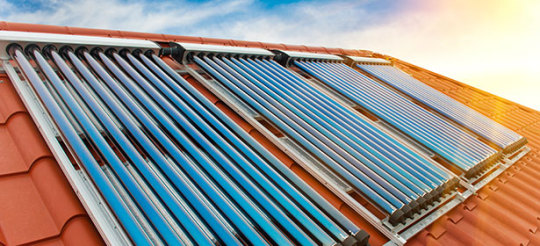
Table of Contents:
The Role of Circulation in Solar Water Heaters
An introduction to the pivotal role of circulation in facilitating heat transfer within the system.
Circulation Pumps vs. Natural Convection: Methods of Heat Transfer
A comparison of two common methods of circulation: using pumps and relying on natural convection, highlighting their pros and cons.
Circulation Pump Operation: Enhancing Heat Transfer
How circulation pumps work to actively move heat transfer fluid through the system, improving heat exchange efficiency.
Pump Speed and Control: Adjusting for Efficiency
The significance of pump speed control in adapting to varying heat transfer requirements and optimizing energy consumption.
Pump Sizing: Matching Flow Rates
Guidelines for properly sizing circulation pumps to ensure an adequate flow rate for efficient heat transfer.
System Pressure: Maintaining Flow
The importance of maintaining proper system pressure to ensure consistent and efficient circulation.
Solar Collector to Storage Tank: The Heat Transfer Journey
A step-by-step explanation of how heat transfer fluid moves from the collectors to the storage tank, highlighting circulation control points.
Balancing Flow: Distributing Heat Equally
How circulation control balances the flow of heat transfer fluid to ensure equal distribution among all collectors.
Temperature Differential Control: Preventing Overheating
How temperature differential control mechanisms ensure that the solar collectors don't overheat, promoting system safety and efficiency.
Backup Heating Integration: Coordinating Heat Sources
How circulation control systems integrate with backup heating elements to provide hot water even when solar energy is insufficient.
System Response to Environmental Factors: Adapting to Conditions
How circulation control systems respond to environmental factors such as weather changes and varying sunlight intensity to maintain optimal heat transfer.
Data Monitoring and Feedback: Real-Time Insights
How data monitoring and feedback loops provide real-time insights into circulation efficiency and performance.
Energy Efficiency and Savings: The Impact of Efficient Circulation
The direct link between efficient circulation control and energy savings, reducing operational costs and environmental impact.
Maintenance and Troubleshooting: Ensuring Circulation Reliability
Tips for maintaining circulation components and troubleshooting common circulation-related issues for prolonged system reliability.
Emerging Circulation Technologies: Advancing Efficiency
A glimpse into emerging circulation control technologies and innovations that promise to further enhance efficiency.
Conclusion: Circulation control is the dynamic force behind efficient heat transfer in solar water heaters. Whether through pumps or natural convection, its ability to balance flow, adapt to environmental conditions, and coordinate with backup heating elements ensures a continuous supply of hot water. Understanding and optimizing circulation control is essential for harnessing the full potential of solar water heaters, contributing to energy savings and a greener, more sustainable future. For more info contact solar water heater supplier in uae or call us at +971 4 2522966
0 notes
Text
Monitoring Solar Collector Performance: Real-Time Data
Efficient performance of solar collectors is critical for the success of solar water heating systems. Real-time data monitoring plays a pivotal role in assessing and optimizing their efficiency. In this blog post, we explore the importance of monitoring solar collector performance through real-time data and how it contributes to the overall effectiveness of solar water heaters.
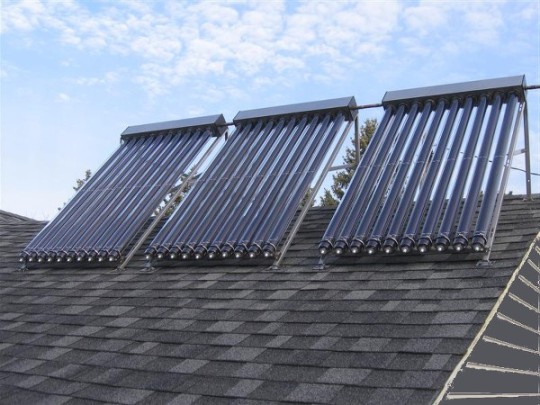
Table of Contents:
The Heart of Solar Water Heating: Solar Collectors
An introduction to the central role of solar collectors in capturing sunlight to heat water.
The Significance of Real-Time Data Monitoring
An overview of why real-time data monitoring is crucial for solar collectors' efficient operation.
Sensors and Data Collection: Eyes on the Collectors
A detailed explanation of the sensors and data collection mechanisms installed on solar collectors to monitor their performance.
Sunlight Intensity Monitoring: Maximizing Energy Capture
How sensors track sunlight intensity, allowing the system to adjust its operations for optimal energy capture.
Collector Temperature Analysis: Efficiency Assessment
The use of temperature sensors to monitor collector temperatures, assessing their efficiency and heat absorption.
Tracking Heat Transfer Fluid: Ensuring Effective Transfer
How sensors monitor the heat transfer fluid's temperature, ensuring it absorbs sufficient heat from the collectors.
Data Transmission and Analysis: Real-Time Insights
How collected data is transmitted and analyzed in real-time to provide insights into collector performance.
System Response: Immediate Adjustments
The ability of solar water heating systems to respond to real-time data, making immediate adjustments to optimize collector performance.
Early Issue Detection: Preventing Efficiency Loss
How real-time data monitoring allows for early detection of issues or malfunctions in solar collectors, preventing efficiency loss.
User Interfaces: Accessible Data Display
The development of user-friendly interfaces that display real-time data to homeowners and system operators, providing transparency and control.
Remote Monitoring: Keeping an Eye from Afar
The convenience of remote monitoring, allowing users to access real-time data and make adjustments from anywhere.
Alarm Systems and Alerts: Prompt Action
How alarm systems and alerts are integrated into real-time monitoring to notify users of critical issues requiring immediate attention.
Performance Optimization: Maximizing Energy Savings
How real-time data analysis informs strategies to optimize collector performance and maximize energy savings.
Maintenance Insights: Prolonging Collector Lifespan
How real-time data can provide insights into maintenance needs, ensuring collectors operate efficiently throughout their lifespan.
Integration with Smart Homes: The Future of Monitoring
The emerging trend of integrating real-time data monitoring with smart home systems for seamless control and optimization.
Conclusion: Real-time data monitoring is the linchpin of solar collector efficiency, ensuring that these critical components of solar water heating systems operate at their best. By continuously assessing sunlight intensity, collector temperatures, and heat transfer fluid performance, real-time data monitoring maximizes energy capture and contributes to energy savings and environmental sustainability. It also empowers users with valuable insights and control over their solar water heating systems, ultimately enhancing their performance and longevity. For more info contact solar water heater supplier in uae or call us at +971 4 2522966.
0 notes
Text
System Monitoring and Control: Optimizing Solar Water Heater Efficiency
In the quest for energy efficiency and sustainability, monitoring and control systems are integral components of modern solar water heaters. These systems ensure that solar energy is harnessed and utilized efficiently, maximizing hot water production while minimizing energy waste. In this blog post, we delve into the importance of monitoring and control in solar water heaters and how they work to optimize efficiency.

Table of Contents:
The Role of Monitoring and Control Systems: Ensuring Peak Performance
An introduction to the significance of monitoring and control in solar water heaters, emphasizing their impact on efficiency and reliability.
Monitoring Solar Collector Performance: Real-Time Data
How sensors and data collection systems continuously monitor the performance of solar collectors, assessing factors like sunlight intensity and collector temperature.
Temperature Control: Preventing Overheating
The mechanisms in place to regulate the temperature of the solar fluid and prevent overheating of the system, ensuring safe and efficient operation.
Circulation Control: Balancing Heat Transfer
How control systems adjust the circulation of heat transfer fluid to optimize heat exchange between the collectors and the storage tank.
Backup Heating Integration: On-Demand Hot Water
The coordination of backup heating elements with monitoring systems to ensure a seamless transition to auxiliary heating when solar energy is insufficient.
Data Analysis and Optimization: Fine-Tuning Efficiency
How collected data is analyzed to fine-tune system parameters and optimize overall efficiency, ensuring maximum energy savings.
Remote Monitoring and Smart Controls: Convenience and Accessibility
The advent of remote monitoring and smart control technologies, allowing users to monitor and adjust their solar water heater systems from anywhere.
Safety Features: Protection and Peace of Mind
The incorporation of safety features such as pressure relief valves and emergency shutdowns, ensuring user safety and system protection.
Alarm Systems and Alerts: Early Issue Detection
How alarms and alerts are integrated into monitoring systems to promptly notify users of any system anomalies or issues.
Integration with Building Management Systems: Commercial Applications
The use of solar water heater monitoring and control systems in commercial settings, seamlessly integrating with building management systems for comprehensive control.
Energy Consumption Tracking: Eco-Friendly Metrics
How monitoring systems can track and display energy consumption metrics, promoting eco-conscious decisions and energy conservation.
Regular Maintenance Reminders: Prolonging System Life
The ability of monitoring systems to provide maintenance reminders, ensuring that users perform routine upkeep for prolonged system longevity.
User-Friendly Interfaces: Making Monitoring Easy
The development of user-friendly interfaces and apps that make it easy for homeowners and businesses to monitor and control their solar water heating systems.
Data Security and Privacy: Protecting Information
The importance of robust data security and privacy measures to protect the information collected and transmitted by monitoring systems.
Conclusion: Monitoring and control systems are the guardians of efficiency and performance in solar water heaters. They ensure that these eco-friendly systems operate optimally, providing hot water while reducing energy costs and environmental impact. By embracing these technologies, homeowners and businesses can harness the full potential of solar water heaters and contribute to a more sustainable and energy-efficient future. For more info contact solar water heater supplier in uae or call us at +971 4 2522966.
0 notes